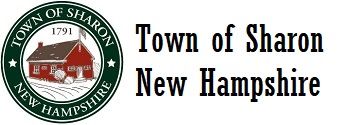North and South burial ground in Sharon added to state register of historic places
BY SCOTT MERRILL Monadnock Ledger-transcript 8/15/2022
The North and South burial grounds in Sharon have been added to the state’s register of historic places, joining dozens of other sites throughout the Monadnock region.
Gina Goff of Sharon, who was also involved in the application process for the Brick Schoolhouse, which made both the state and national registers of historic places, spearheaded the effort to have the cemeteries included.
“The Town of Sharon has a rich history,” Goff said, adding that she believes the project to put the one-room Brick Schoolhouse on the national and state registers fueled a deeper interest in the town’s past. “Having both of these historic burying grounds on the state’s historic registry is confirmation that they’re extraordinary places.”
The South Burying Ground in Sharon contains the graves of many of the town’s well-known and earliest settlers, which include Sharonites who enlisted in the Revolutionary War and the Civil War, as well as early settlers that include farmers, mill workers, regular people and their families, Goff said, adding that people should avoid making grave rubbings as this can damage the slate and marble gravestones.
There are 153 marked graves in the South Burying Ground, many with initialed foot stones. The oldest date is marked 1795, while the most-recent is dated 1948. South Burying Ground’s rural design elements include a stone wall on all four sides, a white wooden gate and gravestones with both winged soul effigies and urns and willows that were common in the late 18th and early 19th centuries.
The North Burying Ground was established in 1834 and the last of its 79 known burials is dated 1927. Originally known as “New” Cemetery, it has granite walls that extend along the burying ground’s roadside and the other walls are piled fieldstone. In keeping with rural burying grounds of the 19th century, most markers are slate and marble and there are five slate monuments approximately 4 to 7 feet tall.

Megan Rupnik, who oversees the National Register of Historic Places for the state and the New Hampshire State Register of Historic Places programs, as well as the state’s architectural survey program, said both burying grounds are historically significant to the Town of Sharon and reflect late 18th- and early 19th-century rural cemetery design with their stone wall enclosures, rectilinear layouts and lack of formal design.
“The South Burying Ground is also significant for its association with the early settlement of the town, appearing to have been established within four years of the town’s founding,” Rupnik said. “It contains many of the town’s earliest settlers and was the only burying ground in Sharon for 40 years.”
The North Burying Ground was established at the peak of the town’s population, reflecting a period of growth for the rural agricultural community. Additionally, this burying ground, which was active from 1834 to 1927, contains the town’s only receiving vault.
The New Hampshire State Register of Historic Places program is part of the New Hampshire Division of Historical Resources, which is under the state department of Natural and Cultural Resources.
Rupnik works with professional architectural historians, local heritage commission or historical society members and other members of the public with the process of documenting their historic properties, and also facilitates the listing of qualified properties in either the national or state registers.
Both the national and state registers are honorific listings and do not place restrictions on a property, Rupnik said, adding that the process for nomination begins when an interested party reaches out to her to learn about the process, which involves completing an inventory form.
Once the inventory form is complete, it is reviewed by the department’s Determination of Eligibility (DOE) committee, which evaluates the property based on the information in the inventory form. If determined eligible for the state register, the next step is to receive permission of the property owner for listing (required by state law), and the final step is for the nomination to be presented to the State Historical Resources Council, a committee appointed by the governor that includes professionals in the fields of historic preservation that meets quarterly and votes for final approval for the property to be listed to the state register.
Goff said she had a lot of support from town officials and others when filling out the application for the burying grounds.
“I stood on the shoulders of other citizens in 2002 who did a wonderful inventory and report on one of the cemeteries, and other reports from the distant past,” she said, describing some of the maps, photographs and other research she included in the application. “There was wonderful material to work with that really helped.”
Goff, who said she considers herself a “little bit of a history buff,” volunteers a few hours a week in Town of Sharon archives located at the town hall and said she would like to see more sites acknowledged for their historical significance in the region.
Other sites on the state’s register of historic places in the Monadnock region include the John Whittemore House, Monadnock Paper Mills Complex and the Sunnyside Cemetery in Bennington; the Robert Todd House, the Blacksmith Shop and the Caroline Wilson House in Francestown; the Daloz, Johnson, Bradford Mill Complex in Hancock; Peterborough Town Library and dozens of others. Visit the New Hampshire Division of Historical Resources website, nh.gov/nhdhr, for a complete listing.
